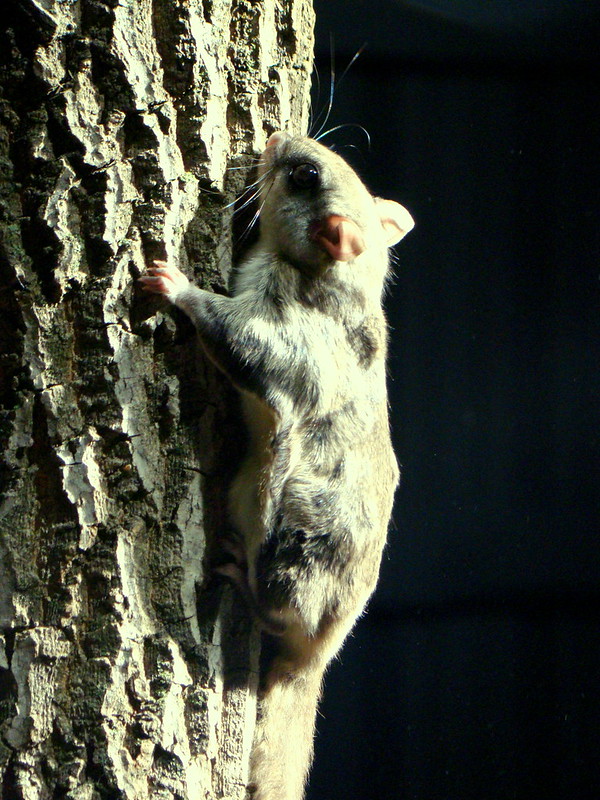There seems to be no end to the variety of plants and animals found in the Corridor. In fact, the more you learn about each species, the more interesting they become. One of my longtime fascination has been with flying squirrels.
For years now, I have been watching, feeding and learning about our most common local squirrel. Yes, I too was surprised to learn that the flying squirrel is our most common squirrel. However, due to their nocturnal habits most of us never get to see them. They are the most nocturnal of all the tree squirrels and the most arboreal of our native squirrels. They are rather slow and clumsy on the ground, but in the trees (where they spend almost all of their time) they are amazingly fast and agile! Being cavity nesters, they live in hollow trees and old woodpecker holes (and sometimes your attic), but readily utilize nest boxes with 1 1/2” entrance holes (like those used by bluebirds). It has been fun building various boxes and monitoring their use.
Flying squirrels are our oldest living line of modern squirrels. Their fossil records go back 30 million years! There are two species of flying squirrels in the U.S.- the northern flying squirrel (Glaucomys sabrinus), with a total length of about 12 inches, and the southern flying squirrel (Glaucomys volans), which is about 9 inches long. We have the smaller southern species here.
Flying squirrels get their name from the way they soar between trees by stretching their legs to expand a furry flap of skin between their front and rear ankles called a patagium. They don’t actually fly, but glide by forming a square kite with their body. It is amazing to see how well they can float on air! Because they are gliding, they always have to start from a higher position than where they land. They can quickly climb up a tree, glide down to the trunk of another tree and repeat that process over and over again until they reach their destination. The average glide is around 30 ft., but glides of up to 270 ft. have been observed! This ability to glide is unique among rodents. They have extra sensitive whiskers on their cheeks, chin and ankles that allow them to find their way in total darkness and use scent glands in their cheeks to mark their routes. They also have very soft foot pads for landing silently on the trunk of a tree. As soon as they land, they race to the other side of the tree in case an owl or other predator has followed them. Their main predators are owls, domestic cats, raccoons, bobcats, weasels and snakes.
Like us, they are omnivores and consume a wide variety of foods. During the spring and summer, their diet consists of insects, fruits, seeds, inner bark, leaf buds, fungi and occasionally even bird eggs and young. During the fall and winter months their diet changes mostly to nuts and other seeds. They are especially fond of oak and hickory forests.
The mother is very protective of her babies and will move her young several times during a season to alternate nests when disturbed. A mother was once seen moving her babies during a forest fire, getting singed in the process! The young can glide at 8 weeks of age and usually become independent in 4 months. Flying squirrels are just one of the many fascinating animals that call the Corridor home!

